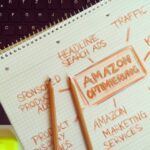Designing High-Converting PPC Landing Pages
PPC landing pages are the pivotal destinations for paid advertising traffic, serving as the critical link between an ad click and a desired conversion. Unlike general website pages, a PPC landing page is meticulously crafted with a singular purpose: to guide a visitor towards a specific action, whether it’s filling out a form, making a purchase, downloading an asset, or signing up for a service. Their success is not merely measured by traffic volume but by their conversion rate – the percentage of visitors who complete the intended goal. Optimizing these pages is paramount for maximizing return on ad spend (ROAS) and achieving sustainable growth in digital marketing campaigns. A high-converting PPC landing page is a finely tuned instrument, harmonizing persuasive copy, compelling visuals, intuitive user experience, and a clear call to action.
The strategic importance of dedicated PPC landing pages cannot be overstated. Sending paid traffic to a homepage or a generic product page often results in lower conversion rates because these pages typically offer multiple navigation paths and a broader range of information, diluting the focus of the visitor. A dedicated landing page, conversely, eliminates distractions, presents information concisely and relevantly to the originating ad, and funnels the visitor directly towards the conversion goal. This singular focus is the cornerstone of effective landing page design, significantly impacting not only conversion rates but also PPC ad Quality Scores, which in turn affect ad position and cost per click (CPC). Google, for example, heavily weighs landing page experience in its Quality Score algorithm; a poor experience leads to higher costs and less visibility. Therefore, understanding and implementing best practices for these specialized pages is a non-negotiable requirement for any serious PPC advertiser.
Understanding the Core Principles of High-Converting Landing Pages
At the heart of any high-performing PPC landing page lies a deep understanding of core marketing and psychological principles. These pages aren’t just about aesthetics; they are about guiding human behavior towards a specific objective.
The Conversion Funnel and Landing Page Placement:
A PPC landing page sits at a crucial juncture within the marketing and sales funnel, typically at the consideration or decision stage. When a user clicks on a PPC ad, they are expressing an immediate interest in a specific product, service, or piece of information. The landing page must capitalize on this intent. It acts as the bridge between the initial interest sparked by the ad and the ultimate conversion.
- Awareness: PPC ads often initiate awareness (though less common for direct conversion PPC campaigns).
- Interest: The ad itself generates interest.
- Consideration/Desire: The landing page is where this interest is cultivated into desire by showcasing value, addressing pain points, and building trust.
- Action (Conversion): The landing page facilitates the final action.
- Retention/Advocacy: Post-conversion strategies handle these later stages, often initiated from the landing page’s successful conversion.
Understanding this placement helps in tailoring the content and complexity. For top-of-funnel (TOFU) campaigns (e.g., for lead magnets like ebooks), the landing page might focus on education and trust-building. For bottom-of-funnel (BOFU) campaigns (e.g., “Buy Now” ads), the page would prioritize urgency, clear pricing, and straightforward purchase paths.
Key Performance Indicators (KPIs) for Landing Pages:
Measuring success is fundamental to optimization. Key KPIs for PPC landing pages include:
- Conversion Rate (CR): The primary metric, calculated as (Conversions / Total Visitors) * 100. A high CR indicates efficiency.
- Cost Per Conversion (CPC): (Total Ad Spend / Total Conversions). Directly impacts ROAS.
- Bounce Rate: The percentage of visitors who leave the page without interacting further. High bounce rates often signal poor relevance, slow loading, or confusing design.
- Time on Page: Indicates engagement. Longer times can be good, but not if the user is struggling to find information.
- Scroll Depth: Reveals how much of the page visitors are consuming. Helps optimize content placement.
- Average Page Load Time: Crucial for user experience and Quality Score.
- Mobile Responsiveness Score: Ensures the page performs well across devices.
- Lead Quality (for lead generation): Beyond just quantity, are the leads generated actually qualified? This often requires post-conversion tracking.
Monitoring these KPIs rigorously provides actionable insights for continuous improvement through A/B testing and iterative optimization.
Psychological Triggers in Conversion:
Effective landing pages leverage principles of human psychology to encourage action.
- Urgency: Creating a sense of immediate need (e.g., “Limited-time offer,” “Expires soon”).
- Scarcity: Implying limited supply (e.g., “Only 3 left in stock,” “Few spots remaining”).
- Social Proof: Demonstrating that others trust and use the product/service (e.g., testimonials, reviews, “X thousand happy customers,” celebrity endorsements).
- Authority: Leveraging credibility from experts, awards, or media mentions.
- Reciprocity: Offering something of value upfront (e.g., free trial, free consultation, valuable content) in exchange for an email or other small commitment.
- Liking: Building rapport and connection with the audience through relatable language and visuals.
- Commitment and Consistency: Encouraging small initial commitments that lead to larger ones (e.g., “Learn More” leading to a demo request).
- Loss Aversion: Highlighting what the user stands to lose by not converting (e.g., “Don’t miss out on these savings”).
- Fear of Missing Out (FOMO): Directly related to urgency and scarcity, emphasizing the negative consequence of inaction.
- Pain-Agitation-Solution: Identifying the prospect’s pain point, agitating it to make it salient, and then presenting the product/service as the ultimate solution. This narrative structure is highly effective in copywriting.
Incorporating these triggers subtly and ethically can significantly enhance a landing page’s persuasive power, guiding visitors towards conversion by addressing their innate motivations and anxieties.
Strategic Planning and Research for Landing Page Design
Before a single pixel is placed or a line of copy written, robust strategic planning and thorough research are indispensable. This foundational work ensures the landing page is not just visually appealing but also strategically aligned with campaign goals and user expectations.
Audience Analysis and Segmentation:
Knowing your audience is paramount. Different segments of your target audience may respond to different messaging, offers, and visual cues.
- Demographics: Age, gender, income, location, education.
- Psychographics: Values, attitudes, interests, lifestyle, personality traits.
- Pain Points: What problems are they trying to solve? What frustrations do they experience?
- Goals and Aspirations: What do they hope to achieve? What are their desires?
- Objections: What potential doubts or hesitations might they have about your offer?
- Buying Journey Stage: Are they problem-aware, solution-aware, product-aware, or highly motivated to buy? This influences the depth and urgency of the content.
Creating detailed buyer personas based on this research allows for highly targeted landing page experiences. A page designed for a small business owner seeking an accounting solution will differ significantly from one targeting an enterprise-level CFO. This deep understanding informs everything from headline choice to CTA phrasing and even the overall visual tone.
Competitor Analysis:
Understanding what competitors are doing (or not doing) provides valuable insights.
- Identify Direct Competitors: Who is bidding on similar keywords?
- Analyze Their Landing Pages: What offers are they promoting? How are their pages structured? What copy do they use? What trust signals are present?
- Identify Gaps and Opportunities: Are there pain points they aren’t addressing? Is their UX clunky? Can you offer a stronger value proposition or a more seamless experience?
- Learn from Successes: What elements on their pages seem to perform well? (Caution: do not simply copy; innovate and improve).
- Differentiate Your Offer: Use competitor analysis to highlight your unique selling points more effectively.
Tools like SpyFu, SEMrush, and Ahrefs can help uncover competitor PPC strategies and landing page examples, providing a competitive edge.
Keyword-Ad-Landing Page Congruency (Message Match):
This is arguably one of the most critical elements for PPC landing page success and Quality Score. There must be a seamless, logical flow from the user’s initial search query, to the ad they click, to the content on the landing page.
- User Query: What did the user type into the search bar? (e.g., “best CRM software for small business”)
- Ad Copy: Does the ad directly address that query and make a relevant promise? (e.g., “Top-Rated CRM for Small Biz – Manage Leads Efficiently!”)
- Landing Page Headline: Does the headline echo the ad copy and query? (e.g., “The Best CRM Software for Small Businesses to Boost Sales”)
- Landing Page Content: Does the rest of the page elaborate on the benefits and features promised, using similar language?
Lack of message match leads to cognitive dissonance, confusion, and a high bounce rate. Users expect to land on a page that directly addresses what they clicked on. Dynamic Text Replacement (DTR) can further enhance message match by automatically inserting the user’s search query or ad keyword into the landing page headline or body copy. This level of personalization makes the page feel highly relevant and tailored, boosting engagement and conversion rates.
Defining Conversion Goals (Macro vs. Micro):
Before designing, explicitly define what constitutes a conversion for each specific landing page.
- Macro Conversions: The primary, ultimate goal (e.g., purchase, demo request, subscription signup).
- Micro Conversions: Smaller, incremental steps that lead to a macro conversion, or indicate engagement (e.g., video view, scroll to specific section, click on a link, download a spec sheet).
While PPC landing pages primarily focus on macro conversions, understanding micro conversions helps in funnel analysis and optimization. For example, if many users scroll to your pricing section but don’t convert, it might indicate a pricing clarity issue. Clear goal definition dictates the page layout, the prominence of the CTA, and the type of information presented. Is it a lead generation page aiming for an email address, or an e-commerce page aiming for a credit card transaction? The design will vary significantly.
Core Components of a High-Converting PPC Landing Page
Each element on a landing page plays a specific role in moving a visitor towards conversion. Optimizing these individual components and ensuring they work cohesively is fundamental.
Headline Optimization:
The headline is the first thing a visitor sees and often dictates whether they stay or bounce. It must immediately grab attention and communicate value.
- Clarity and Conciseness: Get to the point quickly. Avoid jargon.
- Relevance (Message Match): It must directly relate to the ad that brought them to the page and the user’s search query.
- Value Proposition: Clearly state the primary benefit or solution offered. What’s in it for them?
- Pain Point Address: Often, the best headlines acknowledge a problem the user faces and hint at the solution.
- Keywords: Incorporate relevant keywords naturally for SEO and user relevance.
- Types of Headlines:
- Benefit-oriented: Focuses on what the user gains (e.g., “Get More Leads with Less Effort”).
- Question-based: Engages the user by posing a relevant question (e.g., “Struggling to Convert Website Visitors?”).
- Urgency/Scarcity: Creates a need for immediate action (e.g., “Limited Spots: Enroll in Our Masterclass Today!”).
- Direct/Specific: States the offer clearly and explicitly (e.g., “Download Your Free E-book: The Ultimate Guide to SEO”).
- Problem/Solution: Highlights a problem and immediately offers the solution (e.g., “Overwhelmed by Data? Simplify with Our Analytics Dashboard”).
- A/B Testing Headlines: Even minor word changes can have a significant impact. Test different value propositions, emotional appeals, and lengths.
Sub-headlines and Supporting Copy:
Once the headline hooks the visitor, the sub-headline and body copy deepen their understanding and reinforce the value.
- Expand on Value Proposition: Elaborate on the benefits promised in the headline.
- Feature vs. Benefit Distinction: Don’t just list features; explain how each feature benefits the user. (e.g., Feature: “Cloud-based CRM.” Benefit: “Access your customer data from anywhere, on any device, ensuring you never miss a follow-up.”).
- Problem/Solution Framework: Continuously highlight user pain points and position your offering as the definitive solution.
- Persuasive Writing Techniques:
- Empathy: Show you understand their challenges.
- Specificity: Use numbers, statistics, and concrete examples (e.g., “Increase sales by 30%,” not “Increase sales significantly”).
- Clarity and Simplicity: Avoid jargon, write for an 8th-grade reading level.
- Conciseness: Every word must earn its place. Eliminate fluff.
- Active Voice: Makes your copy more direct and powerful.
- Addressing Objections: Pre-empt common hesitations and address them proactively within the copy.
- Readability:
- Short Paragraphs: Break up large blocks of text.
- Bullet Points and Numbered Lists: Excellent for highlighting key benefits, features, or steps.
- Bold Text and Italics: Use sparingly to emphasize critical information.
- Whitespace: Provides visual breathing room, making the page less intimidating.
The copy needs to be scannable, allowing visitors to quickly grasp the core message and key benefits, as most users scan before reading deeply.
Visual Elements and Media:
Visuals are powerful communicators, capable of conveying emotion, illustrating concepts, and reinforcing brand identity much faster than text alone.
- Hero Images/Videos: The dominant visual element near the top of the page.
- Relevance: Must directly relate to the offer and convey the desired emotion or message. Avoid generic stock photos.
- Quality: High-resolution, professional images/videos are non-negotiable.
- Emotional Appeal: Evoke the desired feeling (e.g., happiness, success, relief).
- Context: Show the product in use or demonstrate the service’s benefits. For software, screenshots or short explainer videos are highly effective.
- Subtle Directional Cues: A person looking towards the CTA, or an arrow pointing towards it, can subtly guide the eye.
- Infographics: Great for presenting complex data or processes in an easily digestible format.
- Product Shots: High-quality images from multiple angles, especially for e-commerce.
- Aesthetics and Branding:
- Color Psychology: Use colors that align with your brand and evoke appropriate emotions (e.g., blue for trust, green for growth).
- Consistent Branding: Logo, color palette, fonts should be consistent with your overall brand identity and ads.
- Visual Hierarchy: Use size, color, and placement to guide the eye to the most important elements (e.g., headline, CTA).
- Avoid Distractions: Ensure visuals don’t overwhelm the core message or compete with the CTA. Minimize animated elements or pop-ups that aren’t strategically placed for conversion.
Call-to-Action (CTA) Optimization:
The CTA is the single most important element on the page, the direct instruction for the desired conversion.
- Clarity and Action-Oriented Language: Use strong verbs that tell the user exactly what to do and what they will get (e.g., “Get My Free Quote,” “Download the Ebook Now,” “Start Your Free Trial,” “Shop Now”). Avoid vague terms like “Submit” or “Click Here.”
- Placement: Prominently placed “above the fold” (visible without scrolling) is crucial. Repeat the CTA further down for longer pages.
- Prominence and Contrast: The CTA button should stand out visually through contrasting color against the page background and surrounding elements. It should be large enough to be easily clickable, especially on mobile.
- Urgency and Exclusivity: Incorporate terms like “Now,” “Today,” “Limited Time,” “Only For You.”
- Single CTA (Mostly): For most PPC landing pages, a single, clear CTA is best to avoid choice paralysis and maintain focus. Multiple CTAs can confuse visitors and dilute conversion rates. However, for very long-form content or complex offers, strategically placed secondary CTAs (e.g., “Learn More” alongside “Get a Quote”) might be appropriate if they lead to an immediate micro-conversion.
- Surrounding Text: Add micro-copy around the CTA to reiterate benefits or alleviate friction (e.g., “No credit card required,” “Cancel anytime,” “Join 10,000 satisfied users”).
Forms (for Lead Generation):
For lead generation landing pages, the form is the gateway to conversion. It must be optimized for minimal friction.
- Minimize Fields: Only ask for essential information. Every additional field reduces conversion rates. Start with minimum viable data (e.g., Name, Email). You can gather more data later through progressive profiling or during follow-up.
- Clarity of Labels: Each field should have a clear, concise label. Placeholder text can also help, but labels are generally preferred for accessibility and clarity.
- Error Handling: Provide immediate, clear feedback for form errors (e.g., “Please enter a valid email address”).
- Mobile-Friendly Input: Use appropriate keyboard types for mobile (e.g., numeric keyboard for phone numbers, email keyboard for email fields).
- Pre-populate Fields (if possible): For returning visitors, pre-filling known information significantly improves UX.
- Trust Signals Near Forms: Reiterate privacy policy, security badges, or a guarantee next to the form to alleviate concerns about data submission.
- Conditional Logic/Progressive Profiling: Show different fields based on previous answers, or collect basic info first and more detailed info in subsequent interactions. This reduces initial friction.
- Multi-Step Forms: For forms with many fields, breaking them into multiple, shorter steps can feel less overwhelming and increase completion rates. Show progress indicators (e.g., “Step 1 of 3”).
Trust and Credibility Signals:
Building trust is essential, especially for new visitors who are unfamiliar with your brand.
- Testimonials and Reviews: Authentic quotes from satisfied customers, ideally with names, photos, and company affiliations. Video testimonials are even more powerful.
- Case Studies: Detailed accounts of how your product/service helped specific clients achieve results.
- Security Badges: SSL certificates, payment gateway logos (e.g., VeriSign, PayPal), antivirus software badges.
- Privacy Policy Link: Clearly linked, especially near forms where personal data is collected. Reassures users their data is safe.
- Awards and Certifications: Industry recognition, certifications, or accolades from reputable organizations.
- “As Seen On” Logos: Logos of well-known media outlets where your brand has been featured.
- Social Proof Statistics: “Joined by 50,000+ happy customers,” “Rated 4.9 stars on G2.”
- Money-Back Guarantees/Free Trials: Reduce perceived risk.
- Brand Logos of Major Clients: If applicable, showing you work with recognizable companies.
These elements collectively reduce user apprehension and increase their confidence in taking the desired action.
Unique Selling Proposition (USP):
Your USP is what sets you apart from the competition. It needs to be crystal clear on your landing page.
- Answer the “Why You?” Question: Why should a visitor choose you over anyone else?
- Focus on Key Differentiators: Is it price, quality, speed, customer service, unique features, or a specific niche focus?
- Communicate Clearly: Don’t assume visitors will understand your value. State it explicitly and concisely.
- Reinforce Throughout Page: While the headline often introduces it, the USP should be reinforced in the body copy, testimonials, and even the CTA.
A compelling USP is a powerful conversion driver, particularly in crowded markets.
User Experience (UX) and Design Best Practices
Beyond individual components, the overall user experience (UX) and underlying design principles heavily influence conversion rates. A seamless, intuitive, and fast experience is paramount.
Mobile Responsiveness:
In an era where mobile devices account for over half of all web traffic, mobile responsiveness is not optional; it’s a foundational requirement for PPC landing pages. Google prioritizes mobile-first indexing, and a poor mobile experience directly impacts Quality Score and ad ranking.
- Fluid Layouts: Design must adapt gracefully to various screen sizes without compromising readability or functionality.
- Optimized Touch Targets: Buttons and clickable elements should be large enough and spaced adequately for easy tapping on touchscreens.
- Readable Text: Font sizes should be legible on small screens without requiring pinching and zooming.
- Simplified Navigation (or elimination): Often, traditional navigation menus are removed on mobile landing pages to minimize distraction and funnel the user towards the primary CTA.
- Optimized Forms: Single-column layouts, large input fields, and appropriate keyboard types (e.g., numeric for phone numbers) are crucial for mobile form completion.
- Fast Loading on Mobile Networks: Mobile users are even less patient with slow loading times.
Testing on various mobile devices and screen sizes is essential to ensure a consistent and positive user experience.
Page Speed Optimization:
Every second counts. A slow-loading landing page is a significant conversion killer and negatively impacts Quality Score. Google’s research indicates that as page load time goes from 1 second to 3 seconds, the probability of bounce increases by 32%.
- Image Optimization:
- Compression: Compress images without significant loss of quality (tools like TinyPNG, ImageOptim).
- Correct Sizing: Use images at their displayed size; don’t upload a 4000px wide image if it’s only displayed at 800px.
- Modern Formats: Use WebP format where supported for better compression than JPEG or PNG.
- Lazy Loading: Load images only when they are about to become visible in the viewport.
- Minify CSS, JavaScript, and HTML: Remove unnecessary characters (whitespace, comments) from code files to reduce file size.
- Leverage Browser Caching: Instruct browsers to store static resources (images, CSS, JS) locally so they don’t need to be re-downloaded on subsequent visits.
- Reduce Server Response Time: Choose a reputable hosting provider, optimize database queries if applicable.
- Eliminate Render-Blocking Resources: Ensure critical CSS/JS is loaded first, deferring non-essential scripts.
- Use a Content Delivery Network (CDN): Distributes your content across multiple servers globally, reducing latency for users by serving content from the nearest server.
- Minimize Redirects: Each redirect adds latency.
Tools like Google PageSpeed Insights and GTmetrix provide detailed reports and recommendations for improving page speed.
Navigation and Clarity:
The primary goal of a PPC landing page is singular focus. Therefore, traditional website navigation is usually detrimental.
- Minimize Distractions: Remove main navigation menus, sidebars, and extraneous internal links that could pull the visitor away from the conversion path. The only “navigation” should be towards the CTA.
- Clear Path to Conversion: The page should have a clear visual flow, guiding the visitor from the headline to the benefits, trust signals, and finally, the call to action.
- F-Pattern and Z-Pattern Scanning: Design elements to align with how users naturally scan web pages.
- F-Pattern: Users typically scan in an ‘F’ shape, focusing on the top, then down the left side. Place key information (headline, primary benefits, CTA) along this path.
- Z-Pattern: For simpler pages, users scan left-to-right across the top, then diagonally down to the left, and then left-to-right again across the bottom. Place key elements at the points of the ‘Z’.
- Whitespace: Use ample whitespace around key elements to make them stand out and improve readability.
- Above the Fold: Ensure the most critical information (headline, core value proposition, primary CTA, hero image) is visible without scrolling on most screen sizes. While scrolling is common, the initial view is critical for engagement.
Accessibility:
Designing for accessibility ensures your landing page is usable by everyone, including those with disabilities. This expands your potential audience and demonstrates good corporate responsibility.
- Color Contrast: Ensure sufficient contrast between text and background colors for readability, especially for users with visual impairments.
- Alt Text for Images: Provide descriptive alt text for all images. This is crucial for screen readers and also benefits SEO.
- Keyboard Navigation: Ensure all interactive elements (links, buttons, form fields) are navigable and operable using only a keyboard.
- Clear Form Labels: As mentioned, labels are better than just placeholder text for accessibility.
- Semantic HTML: Use appropriate HTML tags (e.g.,
for buttons) for better structure and screen reader interpretation. - Descriptive Link Text: Avoid generic “Click Here.” Use descriptive text that indicates the link’s destination.
Adhering to WCAG (Web Content Accessibility Guidelines) standards ensures a more inclusive and effective landing page for all users.
Conversion Rate Optimization (CRO) Methodologies
Designing a landing page is the first step; optimizing it continuously is how true conversion success is achieved. CRO is an iterative process of understanding user behavior, identifying friction points, forming hypotheses, and testing solutions.
A/B Testing and Multivariate Testing:
These are the cornerstones of data-driven CRO.
- A/B Testing (Split Testing): Compares two versions (A and B) of a landing page element (e.g., headline, CTA button color, image) to see which performs better. Traffic is split evenly between the versions.
- Multivariate Testing (MVT): Tests multiple elements simultaneously and identifies which combination of elements performs best. More complex, requires higher traffic volumes and longer testing periods.
- Setting Up Tests:
- Formulate a Hypothesis: Based on data or intuition, what do you believe will improve conversions? (e.g., “Changing the CTA button color from blue to orange will increase clicks by 15% because orange creates more urgency.”)
- Isolate Variables: Test one major element at a time in A/B tests to clearly attribute results.
- Define Success Metrics: What KPI are you trying to improve (e.g., conversion rate, click-through rate)?
- Determine Sample Size: Ensure enough traffic to reach statistical significance. Online calculators can help.
- Run Tests for Sufficient Duration: Don’t stop too early. Run tests long enough to account for weekly cycles and reach statistical significance.
- Interpreting Results: Statistical significance is key. Don’t make decisions based on marginal improvements unless they are statistically significant. Use confidence levels (e.g., 95%).
- Iterative Process: CRO is never “done.” Winners become the new control, and new hypotheses are formed for further testing.
Popular tools include Google Optimize (soon to be sunsetted, with GA4 offering some capabilities), Optimizely, and VWO.
Heatmaps and Session Recordings:
These tools provide qualitative insights into how users interact with your page.
- Heatmaps: Visual representations of user behavior.
- Click Maps: Show where users click on the page. Identifies broken links or non-clickable elements users are trying to interact with.
- Scroll Maps: Show how far down the page users scroll. Helps identify where content needs to be moved “above the fold” or if interest drops off at a certain point.
- Move Maps: Track mouse movements, often correlated with eye-tracking.
- Session Recordings: Playback actual user sessions, showing their mouse movements, clicks, and scrolling patterns.
- Identify Friction Points: See exactly where users get stuck, abandon forms, or become confused.
- Uncover UX Issues: Reveals unresponsive elements, layout issues, or confusing user flows.
- Understand User Journey: Provides context for quantitative data.
Tools like Hotjar and Crazy Egg are widely used for heatmaps and session recordings.
User Surveys and Feedback:
Directly asking users for their opinions can uncover insights not available through quantitative data.
- On-Page Surveys: Small pop-up or slide-in surveys asking specific questions about the page, offer, or any difficulties.
- Exit-Intent Surveys: Triggered when a user is about to leave the page, asking why they are leaving or what they couldn’t find.
- Post-Conversion Surveys: Asking new customers what led them to convert or what almost prevented them.
- Live Chat Transcripts: Analyzing common questions or issues raised in live chat can highlight areas of confusion on the landing page.
- Usability Testing: Observing a small group of target users as they navigate your landing page and perform specific tasks.
Qualitative data from surveys and feedback helps validate hypotheses, uncover new problems, and provide context to quantitative results.
Funnel Analysis:
Analyzing the entire conversion funnel, not just the landing page itself, provides a holistic view of user flow.
- Identify Drop-off Points: Where are users abandoning the process? (e.g., from landing page to form, from form submission to thank you page, from product page to checkout).
- Segment Analysis: Analyze funnels by traffic source, device, demographic, etc., to identify specific pain points for different user groups.
- Pathing Analysis: Understand common user paths before and after landing on the page.
Google Analytics provides robust funnel visualization and pathing reports that can pinpoint problem areas within the conversion journey.
Advanced Strategies and Considerations
Beyond the foundational elements, several advanced strategies can push PPC landing page conversion rates even higher and enhance overall campaign performance.
Personalization:
Delivering highly relevant content to individual users based on their context.
- Dynamic Text Replacement (DTR): As mentioned, automatically inserts the user’s search query or ad keyword into the landing page headline or body copy. Tools like Unbounce offer this.
- Location-Based Personalization: Displaying localized content (e.g., nearest store, local phone number) based on the user’s IP address.
- Demographic/Behavioral Targeting: Tailoring content based on known user demographics, past browsing behavior, or purchase history. For example, showing a different hero image or offer to first-time visitors versus returning ones.
- Source-Based Personalization: Customizing the page based on the ad campaign or traffic source (e.g., a page for Google Ads traffic might differ slightly from a page for Facebook Ads traffic, even if the core offer is the same).
- Personalized Offers: Presenting specific offers (e.g., a discount, a premium resource) based on the user’s segment or stage in the buying journey.
Personalization makes the landing page feel highly tailored and relevant, significantly increasing engagement and conversion probability.
Retargeting/Remarketing:
While not directly a landing page design element, effective landing pages are crucial for successful retargeting campaigns.
- Pixel Placement: Ensure your landing pages have tracking pixels (Google Ads, Facebook Pixel, LinkedIn Insight Tag, etc.) properly installed to build retargeting audiences.
- Segment Audiences: Create specific retargeting audiences based on landing page interactions (e.g., visitors who viewed the page but didn’t convert, visitors who filled out a form but didn’t complete a purchase, visitors who scrolled past 50% but didn’t click CTA).
- Tailored Retargeting Ads: Create follow-up ads that specifically address the behavior or drop-off point on the landing page.
- Value-Driven Follow-Up: Offer a stronger incentive, address common objections, or provide more information in your retargeting efforts to re-engage bounced visitors.
A high-quality landing page contributes to richer retargeting audience data, leading to more effective follow-up campaigns.
Legal and Compliance:
Ensuring your landing pages adhere to legal requirements is non-negotiable, especially concerning data privacy.
- GDPR (General Data Protection Regulation): For users in the EU. Requires explicit consent for data collection, transparency on data usage, and the right to be forgotten.
- CCPA (California Consumer Privacy Act): Similar to GDPR but for California residents. Grants consumers rights regarding their personal information.
- Privacy Policy: A clear, easily accessible link to your privacy policy is mandatory, particularly near any forms collecting personal data.
- Terms of Service: If applicable, linking to terms of service, especially for trials or subscriptions.
- Cookie Consent Banners: Required in many regions to inform users about cookie usage and obtain consent. Ensure these are implemented in a non-obtrusive way that doesn’t hinder the user experience or block critical content.
- Transparency: Be transparent about how data will be used. (e.g., “We will only use your email to send you relevant product updates and offers. You can unsubscribe anytime.”)
Non-compliance can lead to hefty fines and reputational damage. Consult legal counsel for specific requirements in your target regions.
Integration with CRM and Marketing Automation:
Seamless integration streamlines lead capture and nurturing processes, making your PPC efforts more efficient.
- Direct CRM Integration: When a form is submitted on your landing page, the lead data should automatically flow into your CRM system (e.g., Salesforce, HubSpot, Zoho CRM). This avoids manual data entry and ensures immediate follow-up.
- Marketing Automation Workflows: Trigger automated email sequences, SMS messages, or internal notifications based on conversion events. (e.g., “Welcome email” after lead magnet download, “Demo requested” notification to sales team).
- Lead Scoring: Automatically assign a score to leads based on their interactions on the landing page and subsequent engagement, helping sales teams prioritize high-value prospects.
- Personalized Nurturing: Use data collected on the landing page (e.g., product interest, industry) to personalize subsequent email campaigns.
Efficient integration ensures that the effort put into acquiring a lead through PPC isn’t wasted by a disconnected back-end process.
Post-Conversion Strategies:
The conversion on the landing page isn’t the end; it’s the beginning of the customer journey.
- Thank You Pages: Essential for confirming the conversion.
- Confirmation Message: Clearly state that the action was successful.
- What’s Next: Guide the user on what to expect next (e.g., “Check your inbox for the ebook,” “A sales representative will contact you within 24 hours”).
- Cross-sells/Upsells: Offer related products or services, but subtly.
- Social Sharing: Encourage sharing of the offer or your brand.
- Navigation: Provide options to return to the main website, browse more products, or connect on social media.
- Confirmation Emails: Immediately send an email confirming the action and providing any promised resources or next steps. This builds trust and reinforces the positive interaction.
- Retargeting Exclusion: Ensure users who have converted are excluded from future PPC ads for the same offer to avoid wasting ad spend and irritating the customer.
Tools and Resources for Landing Page Design and Optimization
The digital landscape offers a plethora of tools to assist in every stage of landing page creation and optimization.
Landing Page Builders:
These platforms specialize in creating conversion-focused pages without requiring extensive coding knowledge.
- Unbounce: Highly regarded for its powerful A/B testing capabilities, dynamic text replacement, and robust drag-and-drop builder. Excellent for marketers focused on conversion.
- Leadpages: User-friendly, good for small businesses, strong focus on template variety and integration.
- Instapage: Offers advanced collaboration features, AdMap (for visualizing ad-to-page congruency), and sophisticated personalization options. Often favored by agencies and larger teams.
- ClickFunnels: More focused on building entire sales funnels rather than just standalone landing pages, but highly effective for direct response marketers.
- HubSpot Landing Page Builder: Integrated within the HubSpot CRM and marketing automation platform, offering seamless lead management.
Analytics Tools:
Essential for tracking performance and understanding user behavior.
- Google Analytics (GA4): The industry standard for website analytics. Provides detailed data on traffic sources, user demographics, behavior flow, conversion goals, and more. Crucial for understanding overall campaign performance.
- Adobe Analytics: Enterprise-level analytics platform offering highly customizable reporting and deep integration with other Adobe Experience Cloud products.
- Bing Webmaster Tools: Provides insights for Bing Search traffic, similar to Google Analytics but for Microsoft’s ecosystem.
A/B Testing and CRO Tools:
Beyond the built-in features of landing page builders.
- Google Optimize (deprecated): While officially sunsetting, its conceptual approach (hypothesis, variations, targeting) remains relevant. Many features are migrating to GA4 and Google Ads.
- Optimizely: A leading enterprise-grade experimentation platform for A/B testing, multivariate testing, and personalization.
- VWO (VWO Testing): Offers A/B testing, MVT, heatmaps, session recordings, and form analytics, making it a comprehensive CRO suite.
Heatmap and Session Recording Tools:
For qualitative insights into user interaction.
- Hotjar: A popular all-in-one tool offering heatmaps, session recordings, surveys, and feedback widgets.
- Crazy Egg: Known for its various heatmap types (click, scroll, confetti) and recordings, along with A/B testing capabilities.
- Microsoft Clarity: A free tool offering heatmaps and session recordings, integrated with Bing Webmaster Tools.
Image Optimization Tools:
Crucial for improving page speed.
- TinyPNG / TinyJPG: Online tools for compressing PNG and JPEG images.
- ImageOptim (Mac) / FileOptimizer (Windows): Desktop applications for lossless compression of various image formats.
- Cloudflare: A CDN that also offers image optimization features like automatic WebP conversion and resizing.
Other Useful Tools:
- Grammarly: For ensuring clean, error-free copy.
- Hemingway Editor: Helps simplify complex sentences and improve readability.
- Google Search Console: Provides data on how your landing page performs in organic search (even if it’s primarily for PPC, understanding organic visibility can be beneficial).
- Fiverr / Upwork: For hiring freelance copywriters, designers, or CRO specialists if in-house expertise is limited.
By strategically leveraging these tools, marketers can move from guesswork to data-driven decisions, continuously refining their PPC landing pages for optimal conversion performance. The journey to a high-converting landing page is ongoing, requiring constant vigilance, experimentation, and adaptation to user behavior and market trends.











